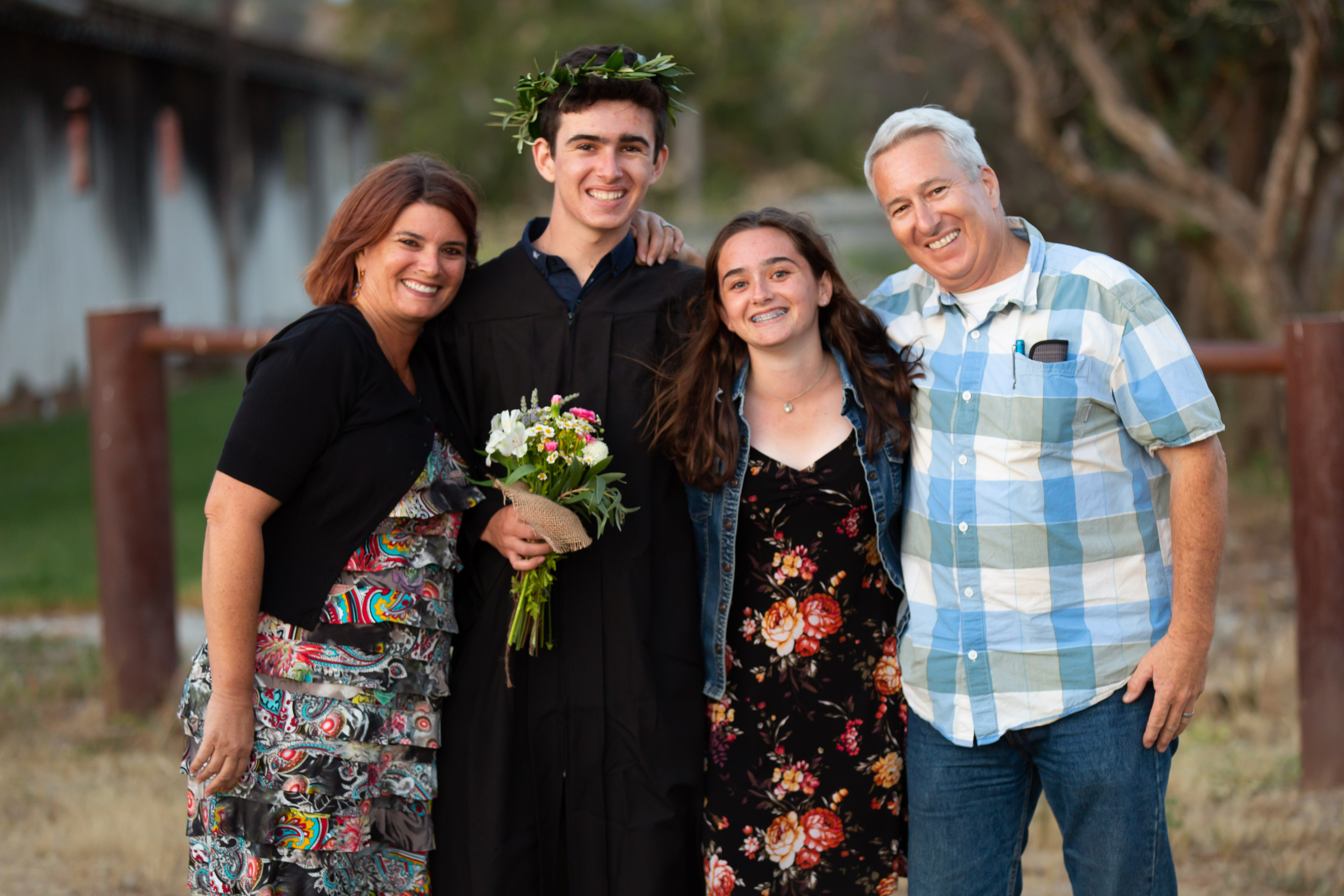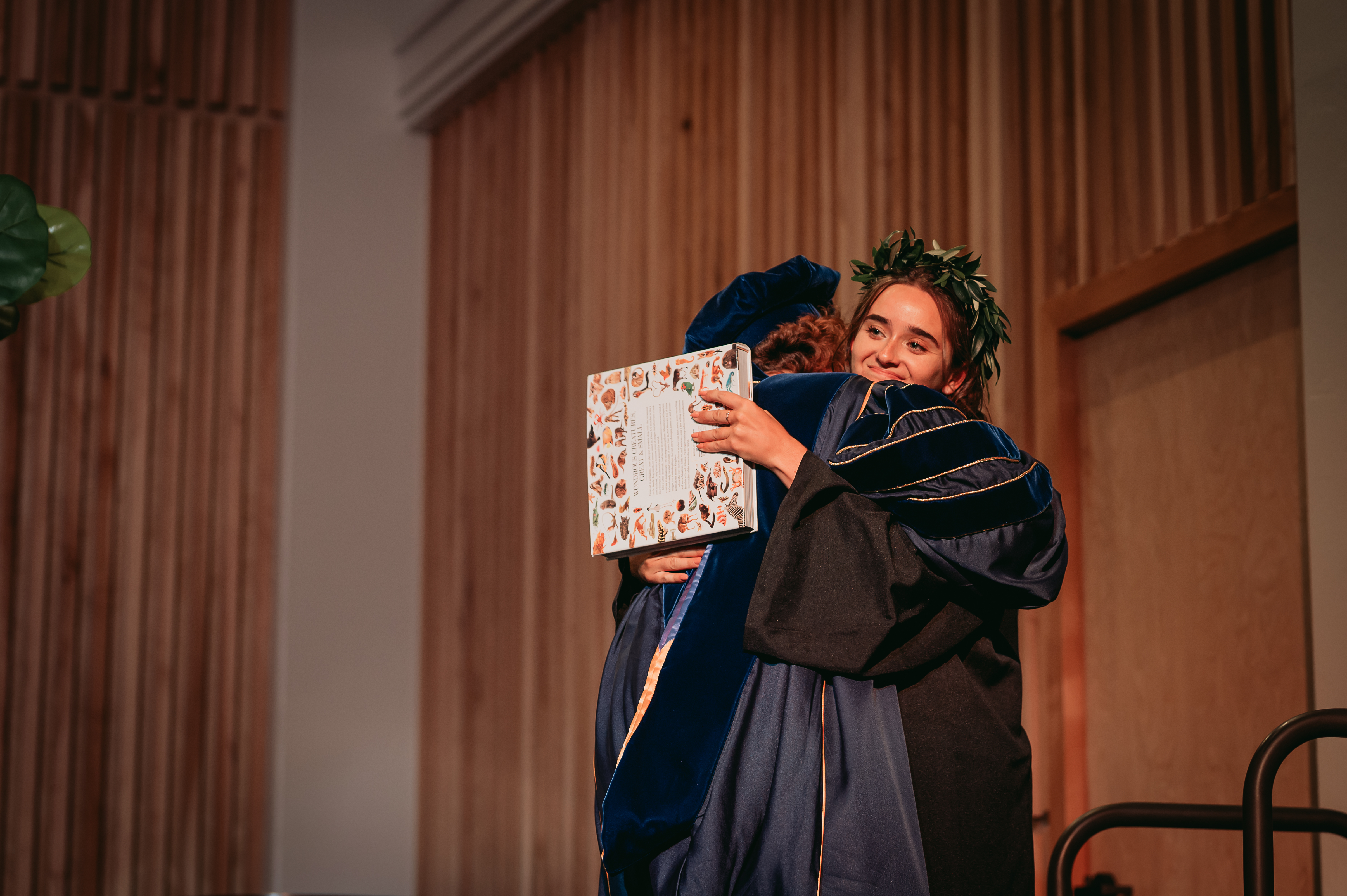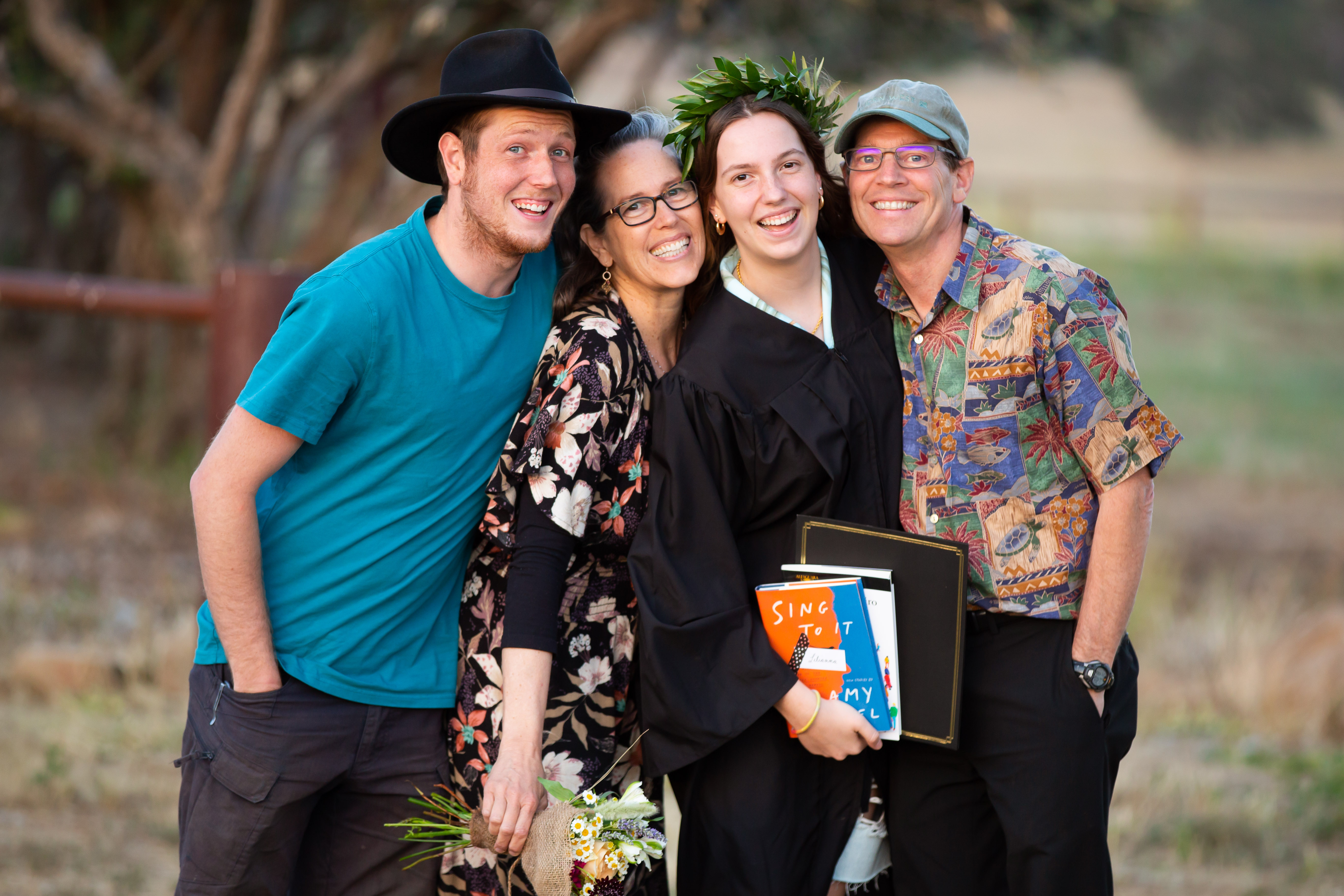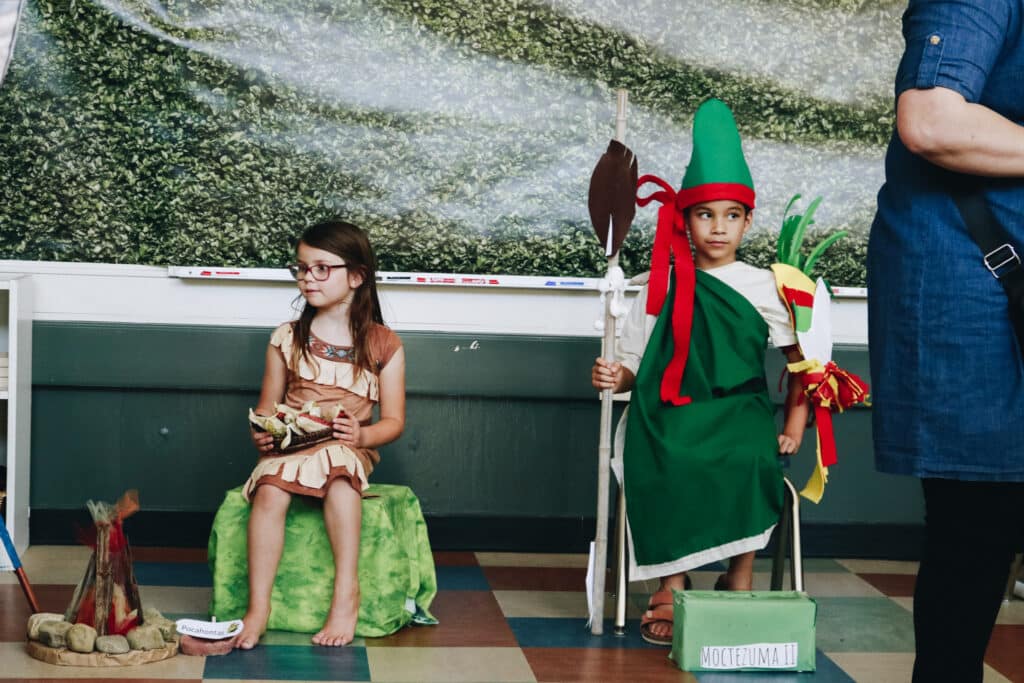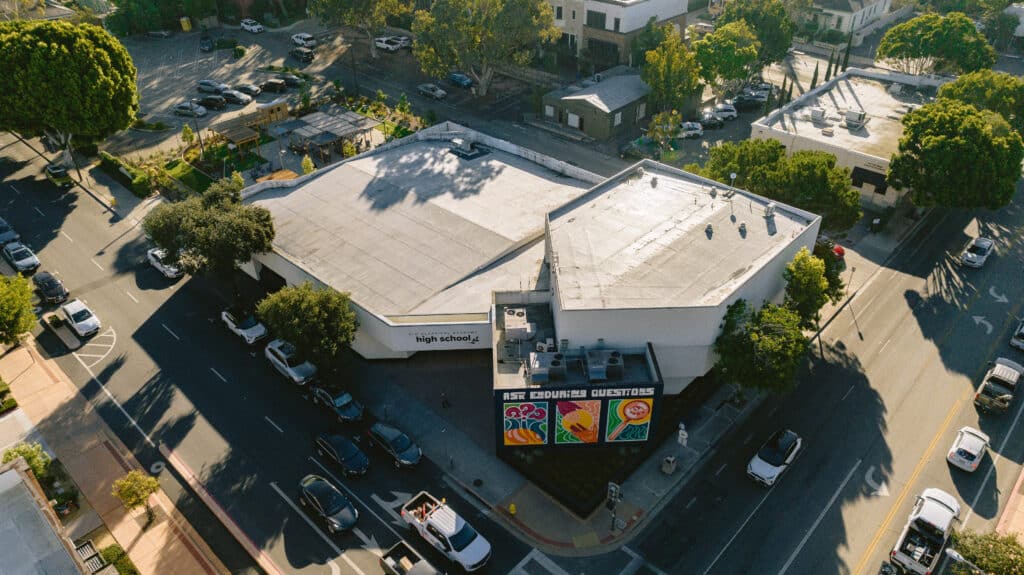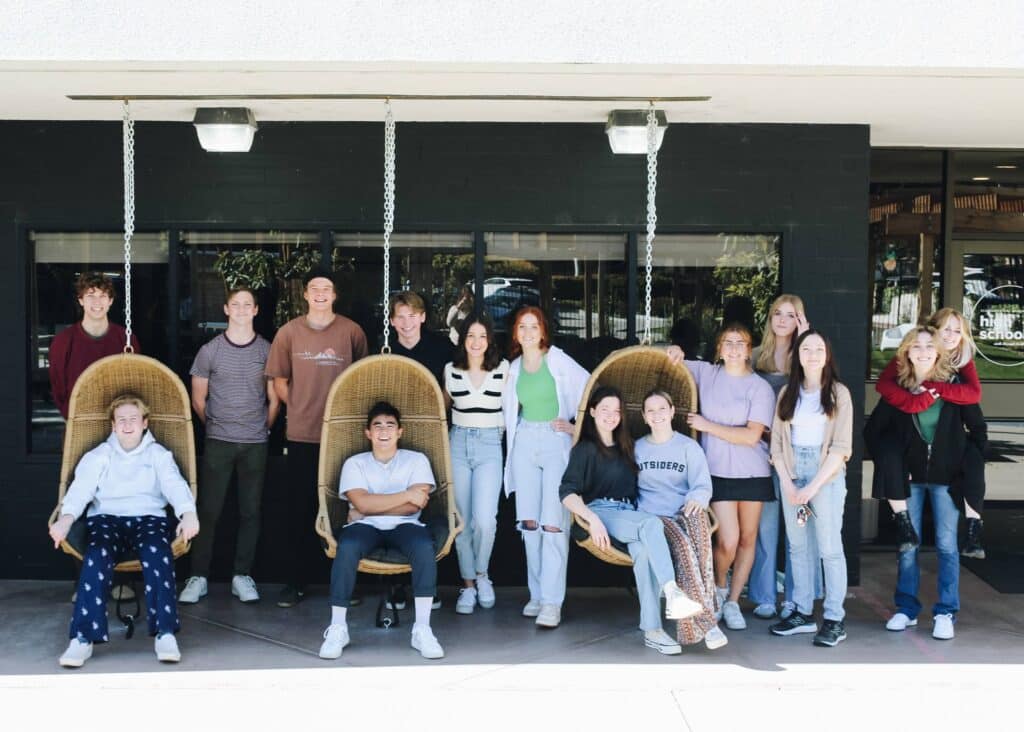Our collaborative model of education combines parent involvement and rhythms of structured and less structured instruction to build and maintain a love of learning in our students. In jointly employing their expertise, parents and SLOCA act collaboratively in conversation with another to mutually benefit and educate the student.
The foundation of this Collaborative Model is our belief in the power of family in the lives of their students—in short, our families matter. When parents, teachers, staff, and students all work together, education really comes alive. Whether in the hybrid or full time program, involved and engaged parents alongside passionate teachers help students thrive, becoming their best selves at each of their developmental stages.
In a traditional school setting, students are on campus in a formal classroom for 35-40 hours per week and are given homework for after-school hours. Our model allows students to maximize their formal time in the classroom in order to enrich valuable time at home, and gives them freedom from the more formal classroom to truly absorb and practice what they learned. Students in all programs benefit from this Collaborative Model of one day of teacher instruction and content, followed by one day of integration and practice. During school days, students learn math, science, history, reading, writing, Latin, logic, and more from inspiring, well-trained teachers who bring classical education to life, assess student progress, provide feedback, and teach crucial academic and personal skills. On alternating days, whether at home or on campus, students complete assignments, read, write, play, discover, rest, and receive more individualized adult attention as they integrate all of the knowledge they learned the day before. When they finish their work, they are free to pursue creative projects, go deeper with the material, or play outside in the fresh air.
This Collaborative Model is applied even within our curricula. While we provide a strong, core classical program, we believe that learning opportunities exist in a variety of settings, and exposure to many subject areas is a wonderful way to round out our children’s education. Therefore, we supplement our core program in several ways—formal art instruction is woven through historical and literature studies, music instruction is provided in kindergarten through 4th grades, and athletics are offered after school. We encourage course material that covers health, PE, religious studies and additional enrichment in the home setting or by taking additional courses at SLOCA through our Friday classes.
This is a unique rhythm that maximizes rich learning while creating space to nurture relationships, creativity, knowledge integration, and the connections they need to thrive on their academic journeys and life beyond.
Some schools only employ a collaborative model where students are on campus two or three days per week and at home the alternating days. But at SLOCA, we apply our model across all programs whether students are on campus two or five days a week—so both our hybrid and our full time programs follow these rhythms and emphasize family involvement.
In summary, the benefits of this Collaborative Model are:
- Parents are more involved with their child and their academic journey
- Students learn quickly how to be accountable for their work and are equipped to progressively take more ownership in their day-to-day
- Students have more opportunities for activities and interests
- With both parent and teacher attention to students’ unique learning needs, learning can be better individualized and adapted to meet each student.
“Non-classroom days give my children more room to explore and develop who they are. My oldest daughter is very different during her home days (on campus) from who she is in the formal classroom. She plays differently and assumes a role of leader sometimes which doesn’t normally happen in the classroom. My younger daughter leads more in the classroom, but on her home days she prefers to be a follower and explore more tactical interests such as cooking and cleaning. The rhythm allows different strengths to be nurtured in different environments.” —Amanda, SLOCA parent of 3




